
Gloiopeltis furcata
Jelly Moss, Red-brown Mat Weed
On site interactions conducted: 13 June 2021
Gonzales Bay, Juan de Fuca Strait, B.C., Canada.
Tide: 1.0 foot tide 12:07 pm PDT (measured at Oak Bay Tidal Station)
Conditions: Mainly overcast (95% cloud cover), no precipitation, wind calm, sea smooth, 15˚C. Humid today after a light overnight rain.
Phase of Moon: Waxing Cresecent (approx. 78 hours into this phase at time of interaction); (Previous Phase, New Moon, 10 June 2021 at 3:52am PDT: Next Phase, First Quarter, 17 June 2021 at 8:54pm PDT.)
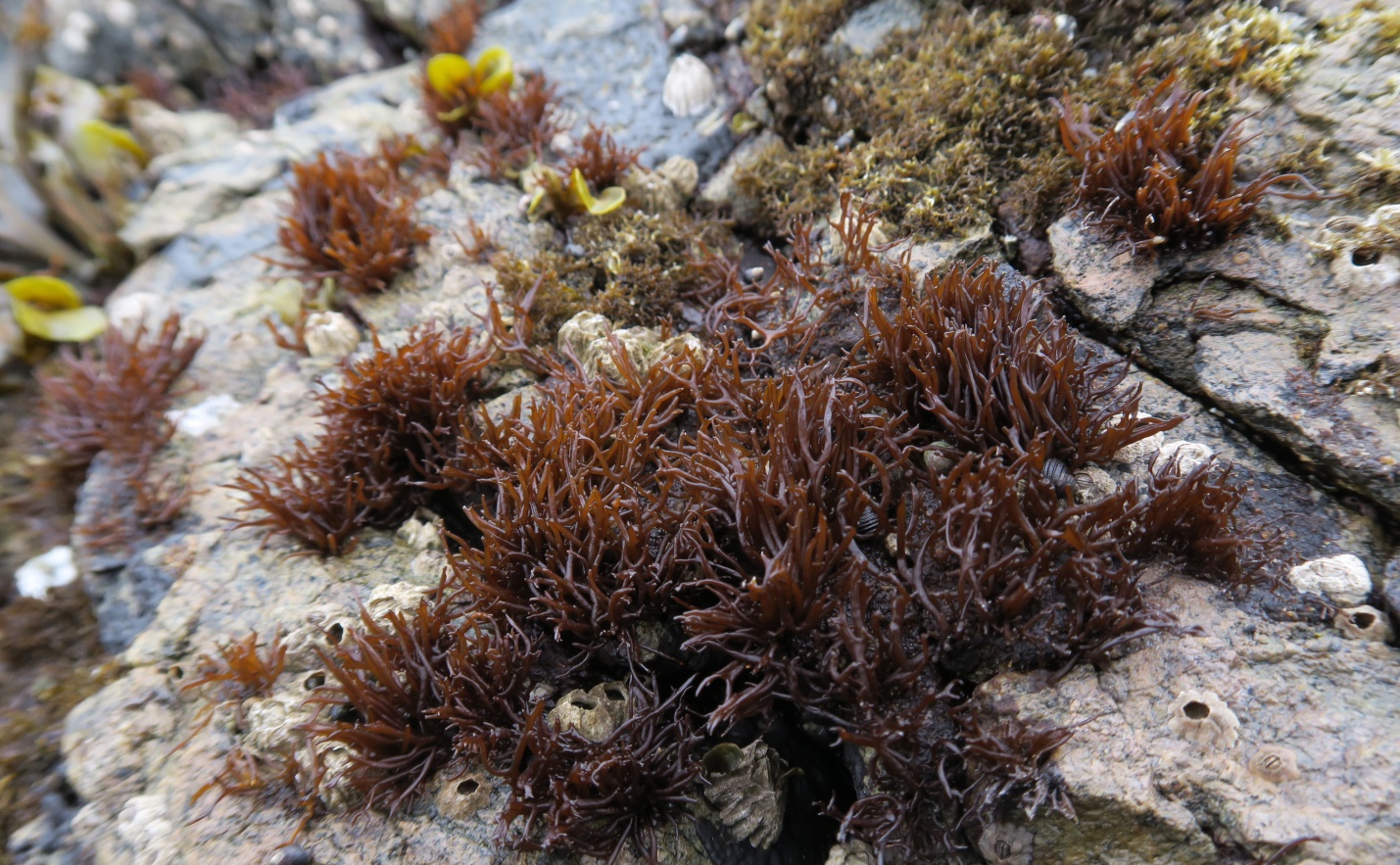
Figure 1: Gloiopeltis furcata growing on the high intertidal rocks; some small Fucus blades, patches of Tar spot seaweed and a lower growing greenish-colored patch of Nail Brush seaweed are neighbors. Gonzales Bay, Juan de Fuca Strait, B.C., Canada. June 6, 2021. Photo ID 27337 ©Seaweedwhisperings.com
Person 1:
Seems to prefer somewhat vertical surfaces, but doesn’t seem overly picky in habitat choice…, except that it likes bare rock.
It’s not crowded in appearance.
Likes to loosely associate with other seaweeds, but doesn’t want to be too chummy – keeps a bit of distance.
Browny-purple-olive coloration.
Thallus is erratically forked; looks sort of like a pronghorn antelope’s antlers.
Shiny in appearance – soft to the touch.
Crunchy and crisp in mouth – no taste.
No apparent stipe; branches arise immediately from a wide holdfast.
Holdfast is comprised of erratic, disoriented haptera.
The stems are imperfectly cylindrical and almost translucent.
Wants to be noticed, but is not showy and can be overlooked.
Rather superficial in its way of being. Others can see through you and can be dismissive.
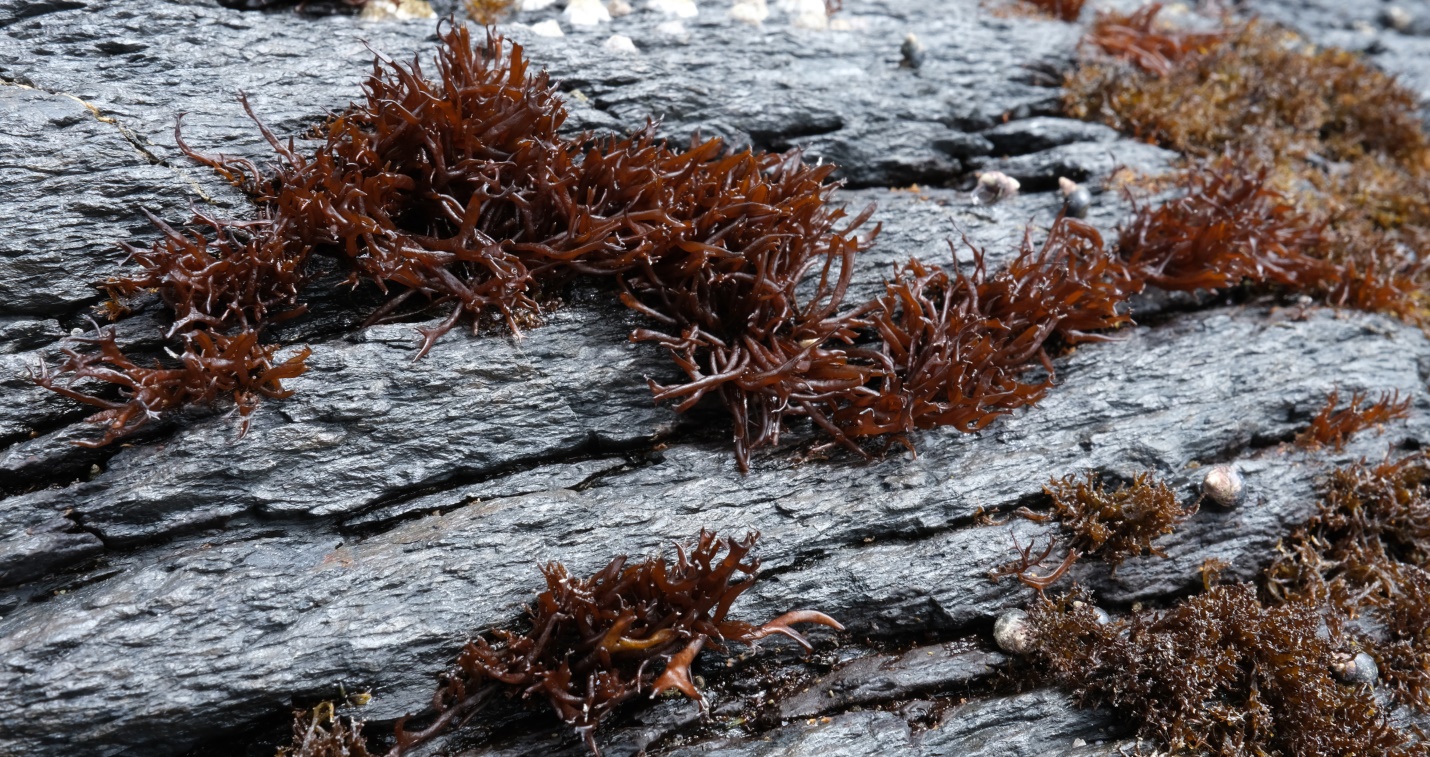
Figure 2: Tufts of Gloiopeltis furcata growing on the high intertidal rocks; periwinkle snails and Endocladia muricata, Nail Brush seaweed, also live in this zone. Conditions this spring, 2022, seemed ideal for Gloiopleltis; we found it in many locations and wherever it occurred it seemed more prolific and more robust than in other years. This spring lingered on with cool temperatures and much precipitation; probably the delay of summer heat was favorable to this species. Gonzales Bay, Juan de Fuca Strait, B.C., Canada. June 5, 2022. Photo ID 27338 ©Seaweedwhisperings.com
Person 2:
Craggy rocks. You like rough surroundings, AND vertical is even better!
This is where you can flourish and not have your tender stems damaged, for who climbs these short vertical walls save the periwinkle snails?
Safe on the vertical!! Or, in the rocky crags.
You do have a gelatinous look when observed up close – a warm red-caramel color that is translucent, like jelly.
Your stems grow with an irregular branching pattern. The longer ones remind me of tiny ungulate antlers.
As I photographed you again I recognized another similarity in form – you look like some forms of cordyceps fungi when they sprout out of an insect it has overtaken. However similar your look may be, you feel much more benign – not like you’ve overtaken and assimilated another life for your own sustenance, but more like those gelatinous branching stems of yours are reaching out to gather data – to “pull in” information from you surroundings so that you can check it out. This is reminiscent of how a snakes tongue ‘tests’ the environment by drawing in moisture borne odor particles and passing them by their vomeronasal organ (Jacobson’s organ) for identification.
Is each branch (thallus) one big cell or at least functioning “as if one”…? As if what the tips of your thalli detect, the rest of you also discerns?
A stem pulls away very easily from the holdfast, as if it has no strength to resist my pull.
Too tiny to taste much of anything, but texture is like a partially cooked spaghetti noodle.
You grow in the high intertidal.
There is not much competition here, but nearby are Nail Brush Seaweed (Endocladia muricata), Fucus distichus, Tar Spot, many barnacles and a few Mastocarpus sp. thalli, limpets and periwinkle snails.
Compared to Nail Brush you look richer, warmer. You have more red within, you’re a bit taller, and your clumps grow more as collections of tufts, whereas Nail Brush is often a trodden down mat of greener tinted or even blackish looking stems with tiny whitish protuberances.
At a quick glance, if one wasn’t looking carefully, with your size and your choice of habitat you could be confused for Nail Brush.
I don’t think you like to be NOT seen for who you are as a distinct and different seaweed, AND you can see that at times that same “cloak of invisibility” is useful to you.
Holdfast – very dark/blackish red mat that looks like it is composed of tiny gelatinous worms all melted together onto the rock. So, we have the jelly theme here again, too. Some kind of “horror-Halloween-themed” jelly candy – looks frightful but is harmless / benign.
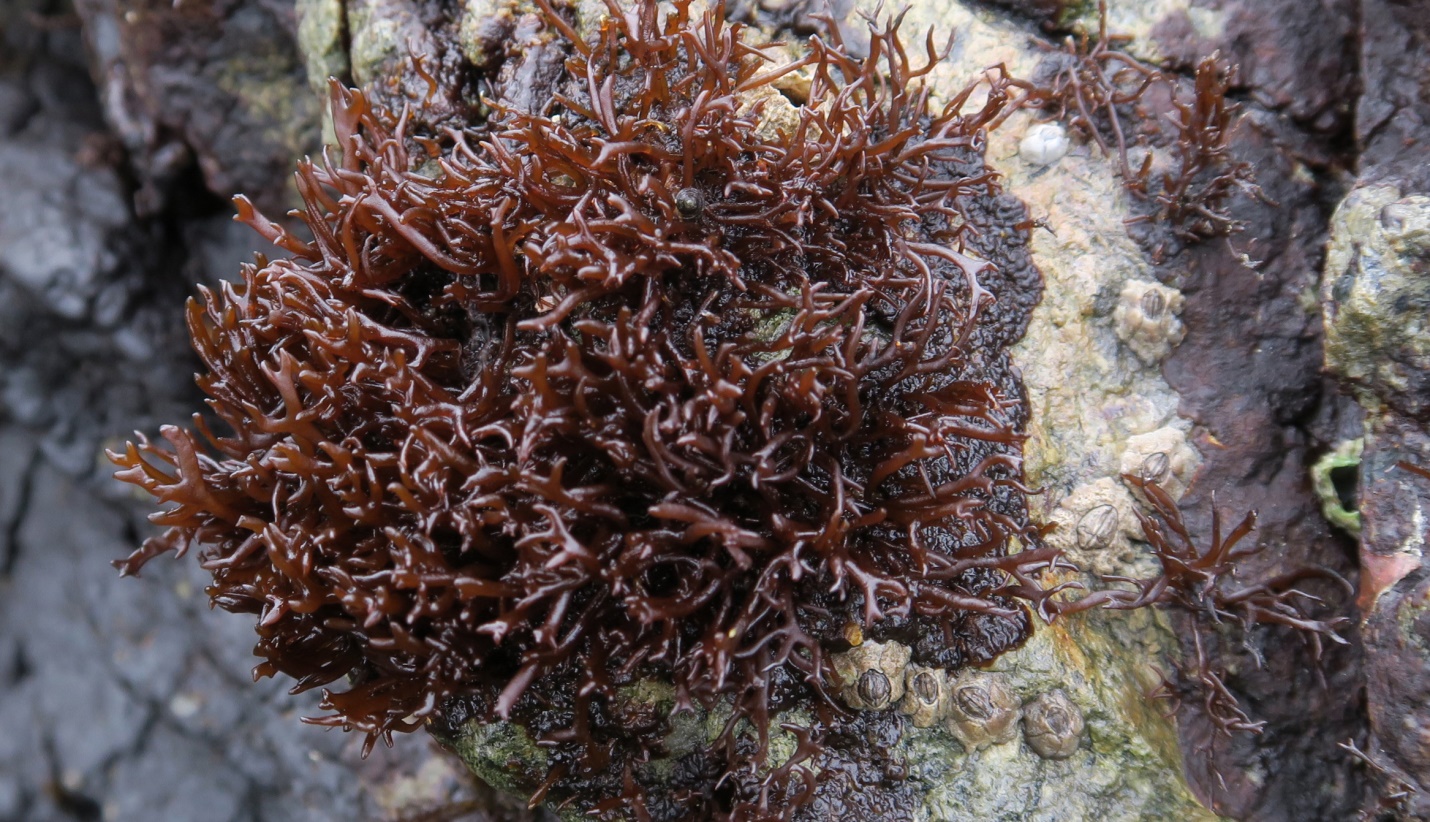
Figure 3: Gloiopeltis furcata showing what appears to be its distinctive looking holdfast – visible most clearly at the right and lower perimeters of the algae. Gonzales Bay, Juan de Fuca Strait, B.C., Canada. June 6, 2021. Photo ID 27339 ©Seaweedwhisperings.com
Discussion:
Algae, pronghorn antelope, fungi, snakes – there were certainly a number of varied kingdoms of life forms alluded to in our experience with this seaweed. This might link to the “cloak of invisibility” concept – that Gloiopeltis can find it to be advantageous to not be ‘identified’ for who it really is, and yet often simultaneously possesses a type of childish desire to have things “both ways”, i.e. also wanting very much to be “seen”. It seems that at the crux of this dichotomy is the fact that Gloiopeltis likes to associate with others, but ONLY on its terms. So if Jelly Moss is feeling ‘snake-ish’ one day, it wants to be related to as a snake, and nothing more. On another day, only pronghorn-antler-type interactions will be welcomed and the snake-quality is nowhere to be seen. For the seaweed itself, this exploration of many possible ways of being seems to be an intrinsic part of who they are, yet they also have not taken it far enough along to be able to understand or ‘explain’ it. They’re frequently not anywhere near confident in it. So, others who try to relate with Gloiopeltis may easily become confused or off-put or simply unadmiring of certain of the changeable presentations.
It seems that in your testing and trying out there is uncertainty and hesitation and no true adoption of any one way of being. This reminds us of the question raised, “Do you assimilate the information you bring in?” Yes it feels as if you do. You bring it in, hold on to it, but also don’t seem to really go anywhere with it. So, it’s like you aren’t actually aware of all that you have assimilated – it is there, but not available to your conscious self in a useful or reliable way. Perhaps this is like having a hindbrain function rather than a full human nervous system and brain. All the essentials are handled beautifully by the hindbrain, but extra information brought in is not really able to be processed. Possibly there is no desire to, rather than little means to, process and articulate. Gloiopeltis, probably you can do more with all that you take in, but it feels like you often prefer to rely on more basic modes of operation.
Why would you choose that? Sticking with the more basic mode rather than going further? It feels that for Gloiopeltis to do more than assimilate and store within, it feels very risky, fraught with danger, and full of far too many unknowns. Safety is preferred and somehow still very much needed, and so they hold on, don’t go very far from what is already familiar. More often than not, established ways of being are very much “good enough” for this seaweed. However, that is not all to their story. There is also a lot of potential within the translucent stems that reach and explore and bring in information. There is an expectant kind of atmosphere that one can also sense about Gloiopeltis – that something may one day be birthed that is internally still being developed.
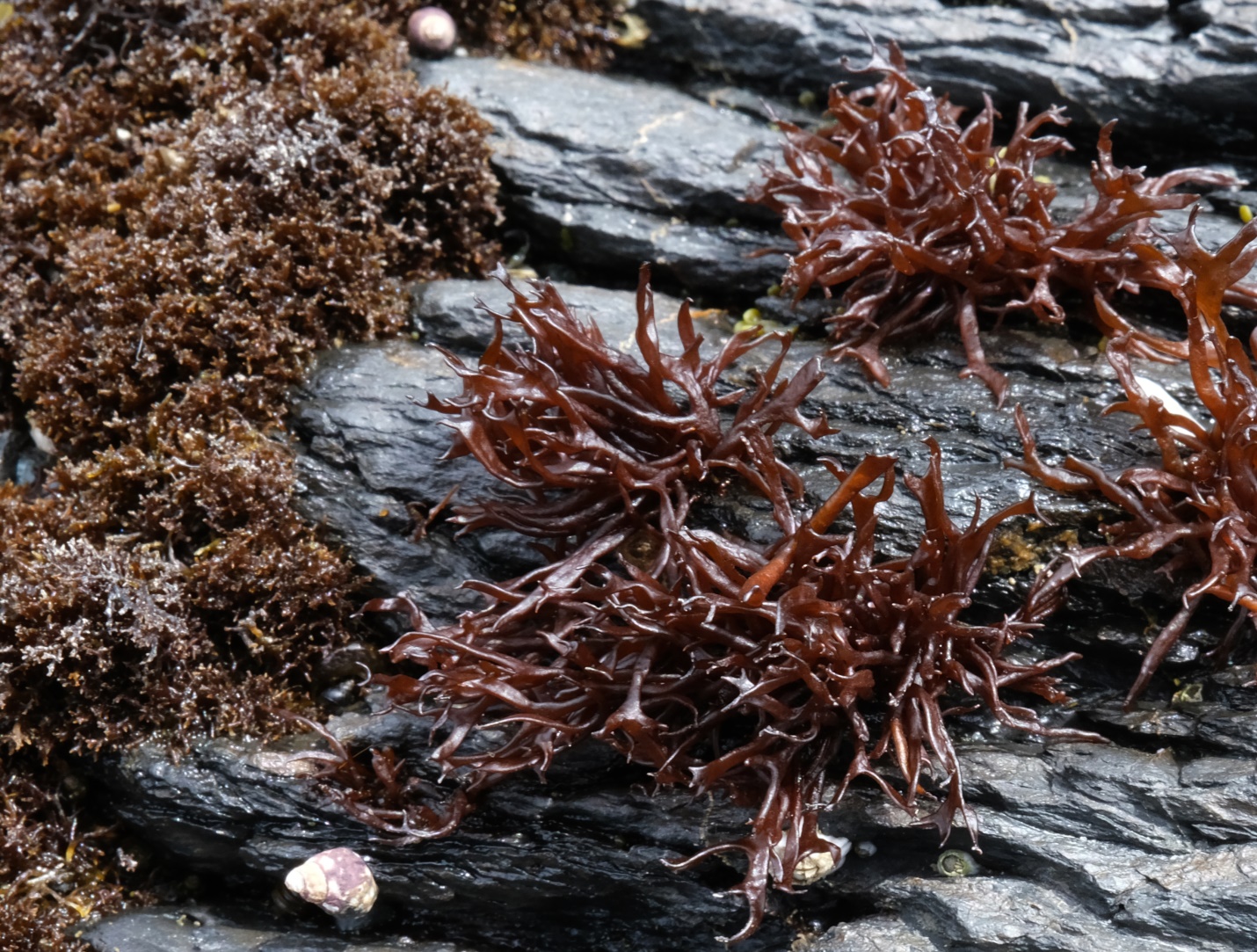
Figure 4: A closer view of Gloiopeltis furcata growing adjacent to Endocladia muricata (on the left). Sea Moss is the common name for the species on the left, and Sea Jelly for our species of note. Both can co-occur in the high intertidal zone, although Sea Jelly, at least in our region, is less common. Gonzales Bay, Juan de Fuca Strait, B.C., Canada. June 5, 2022. Photo ID 27340 ©Seaweedwhisperings.com
Biology & Natural History Information:
Description:
An irregularly and infrequently dichotomously branched thallus grows from an encrusting base and forms tufts 2 to 5 cm tall. The cylindrical branches are smooth. The thallus is rust red to amber in color and has a gelatinous, rubbery to slippery texture when wet; it becomes “crunchy” and almost black when dry.
Habitat:
This seaweed often forms extensive, turf-like mats on rocks in the high to mid intertidal. It lives in regions of both protected and semi-exposed habitats.
Distribution:
Bearing Sea and Aleutian Islands, Alaska to Punta Eugenia, Baja California, northern Mexico; China; Taiwan; Korea; Japan; Russia.
Remarks:
The annual upright branches (thalli) of Gloiopeltis grow from a perennial base each spring. This is a less resilient alga than Sea Moss, Endocladia muricata, with which it can co-occur.
Classification:
Phylum: Rhodophyta
Class: Florideophyceae
Order: Gigartinales
Family: Endocladiaceae
Genus: Gloiopeltis
Species: Gloiopeltis furcata (Postels & Ruprecht) J.Agardh 1851
Former name(s): Dumontia furcata
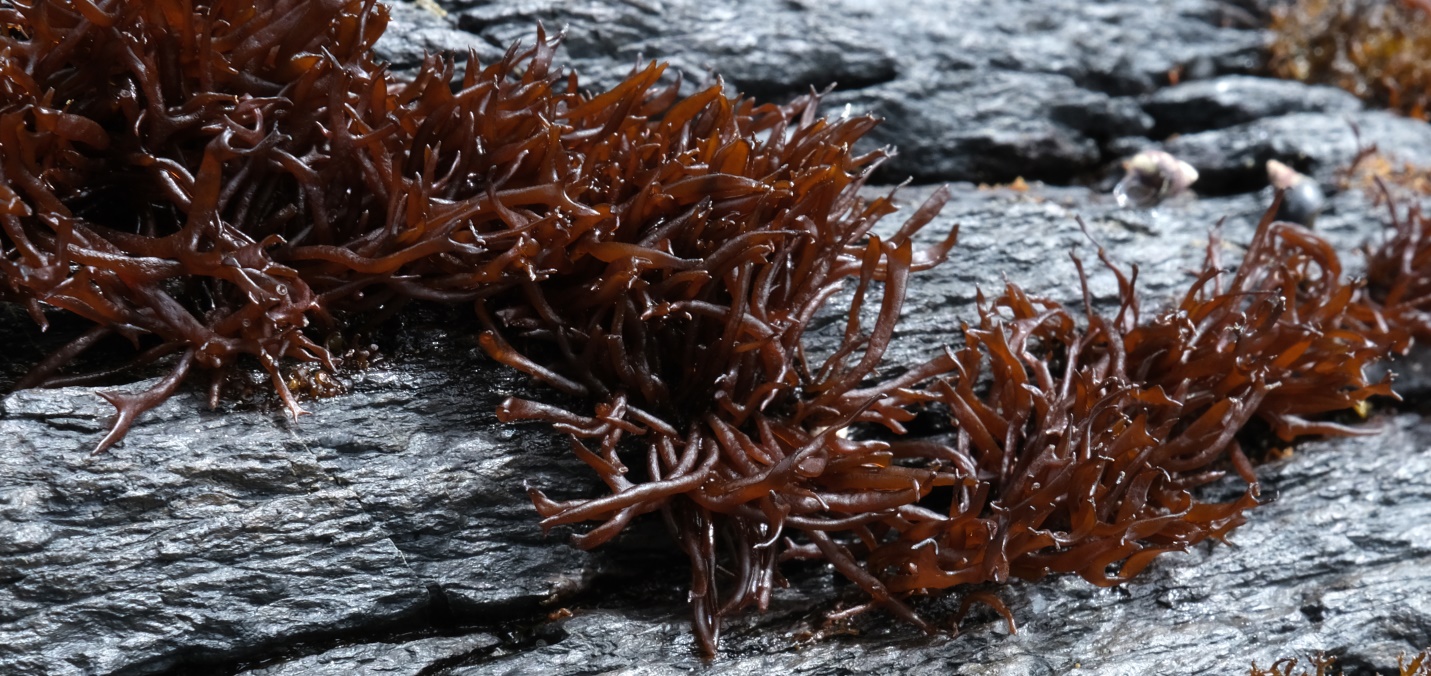
Figure 5: Zoomed in a little closer, this view of Gloiopeltis furcata evokes the cordyceps “look”, or possibly even pronghorn antlers or forked snake’s tongues. Gonzales Bay, Juan de Fuca Strait, B.C., Canada. June 5, 2022. Photo ID 27341 ©Seaweedwhisperings.com
![]()